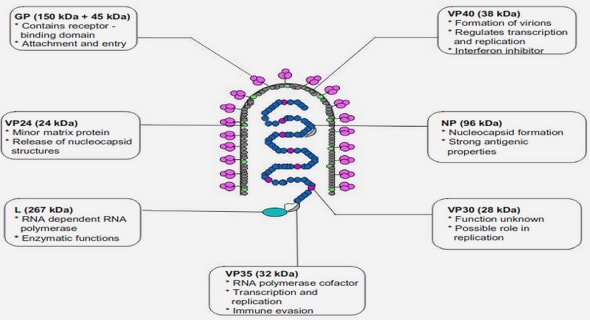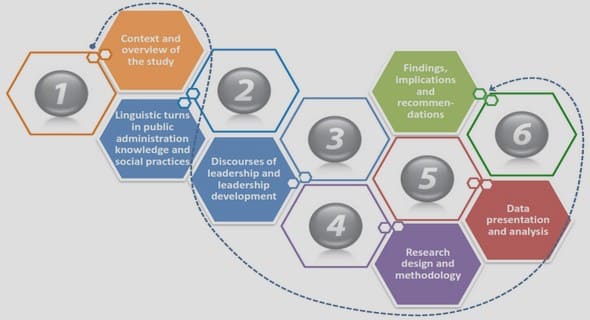Get Complete Project Material File(s) Now! »
CHAPTER TWO THE HISTORICAL CONTEXT DESCRIBED
A key criterion of the success of policing change in South Africa was the legitimation of the police, who had once oppressed the majority of the country’s citizens. (Shaw 2002:120)
INTRODUCTION
Before entering into conversation with my co-researchers, there was a lot of information that I already knew, having participated in the new structures from the early stages of its development. This information formed the background context to the discussions I had with my co-researchers and others. There are essentially three reasons why I have included this chapter.
Firstly, I recognise that other readers may not be familiar with the information I would regard as “taken-for-granted” knowledge. The information may help readers understand what is said in the various conversations and the themes that emerge.
Secondly, if I have to be honest with myself, this chapter was included because of my own anxiety. I was initially unsure about how many elements would be included in the conversations with my co-researchers. In order to put my mind at ease and focus fully on what my co-researchers wanted to discuss, I recorded the historical context of changes in South African policing. As it turned out, my fears were unwarranted because they had more than enough issues to discuss.
Then thirdly, and most importantly, my research methodology provided the structure requiring this chapter. The first of the seven movements (describing the context) necessitates this chapter. For my co-researchers it was a comparison between how things used to function and how new developments were unfolding. This chapter will outline some of the necessary changes in structures under a new constitution.
PRIOR TO 1994
Prior to 1994, police officers experienced a great deal of power in South Africa. This resulted in a history of abuses within the policing structures. The abuse of power by police was closely linked to upholding apartheid laws, which led to tremendous community distrust of the police, particularly amongst marginalized people. Mark Shaw wrote:
Crime control under apartheid was indistinguishable from political control, as the police sought to prevent crime largely through controlling the movement of black people, the putative perpetrators, into white areas. Harshness, brutality and racism were hallmarks of apartheid era ‘law enforcement.’
(Shaw 2002:xi)
Many of these abuses have been recorded by various writers and in the findings of the Truth and Reconciliation Commission (TRC). The TRC was established to hear the stories of South Africans who suffered under Apartheid laws. Other authors have also written extensively on the history of police brutality and covert operations in maintaining White minority rule. These authors include those from a wide range of disciplines. One such writer is Gavin Cawthra who says that, even during the F.W. De Klerk era, they were “seeking to destabilise the ANC and its allies to weaken their position at the negotiating table” (Cawthra 1994:5). Details of those abuses fall outside the scope of this thesis because they are already being documented in various forms. Yet, for this thesis, it is important to remember that the history of the police in South Africa has meant that future challenges become more complicated.
As South Africa moves further in its new democracy, “the police in the new order must achieve two apparently competing goals – to abandon their authoritarian past and to repel the crime wave” (Shaw 2002:xi). In terms of revamping the police Cawthra acknowledged that:
Action is needed on many fronts: within the police force, in the external environment in which they operate, and in communities themselves. Democrats broadly agree that the main aim is to restore public confidence and involvement in policing so that a genuine partnership between police and community can emerge, in which consensus rather than coercion is the norm.(Cawthra 1994:161)
In seeking to address these challenges, there have been structural changes that have affected the way policing needs to be done. As stated in Chapter One: after the 1994 elections, the South African government realised the need to change community perceptions regarding the police. These changes have not been done overnight, as this chapter will further illustrate.
A BRIEF HISTORICAL OVERVIEW
Amongst the tasks that needed to be done was the joining of eleven law-enforcement agencies into one; the process of writing a policy framework for policing; introducing name changes to shift people’s perceptions of the police into more positive ones; altering the leadership structures; community police forums and other accountability structures to curtail the abuse of power and to refocus police attention onto fighting the ever-increasing levels of crime.
Amalgamating eleven agencies into one
In what is referred to as “the old South Africa” (prior to 1994), eleven different law-enforcement agencies were operating. These were the law-enforcement agencies in the TBVC States (Transkei, Bophuthatswana, Venda & Ciskei), the Self-governing Territories (Gazankulu, Kangwane, Kwandebele, Kwazulu, Lebowa & Qwaqwa) and South Africa. Each had different uniforms, rank structures and worked under different laws. The first task was to incorporate all these agencies into one unified structure. One of the political problems was that two of the main forces were the SAP (the old South African Police Force) and the Kwazulu Police (essentially an armed wing of the Inkatha Freedom Party). Both had been in violent opposition to the ANC. Members of the armed wing of the ANC joined to the South African Defence Force (which became the South African National Defence Force) and thus did not have many candidates for leadership and rank-and-file positions in the SAPS. Those who were willing to go into the SAPS had no “significant hands-on experience with public order policing, classic detective work, or crime prevention” (Laufer 2001:16). Other problems included those of illiteracy, previous (often inferior) training, different rank structures and how many years of service people had. All these problems had to be ironed out.
As part of my research question of how policemen are adapting to a new situation in South Africa, the question for me here was whether past relationships of antagonism were overcome? And how did the police personnel experience this amalgamation of other agencies and even previously opposed forces?
Green and White Papers
Along with that integration, a whole new policy on safety and security needed to be drafted. The new government’s policy on safety and security was twofold: firstly, to re-orientate the police towards becoming protectors of the communities they serve; and secondly, to mobilise people to participate in the provision of safety and security. The initial policy was outlined in the 1994 Green Paper, which emphasised democratic control, police accountability and community participation. The Draft White Paper was released in May 1998 for public consultation and the final White Paper was presented in September 1998. This then informed national legislation on safety and security.
Name changes
Regarding the re-orientation of police work, a number of changes in names occurred. This was an attempt to change the perceptions from a militaristic structure to a government service provider. Firstly, the government department in charge of the police changed its name from the “Department of Law and Order” to the “Department of Safety and Security,” and during 2006 changed to the “Department of Community Safety and Liaison.” Also during 1995/6 the South African Police Force became the South African Police Service (with a new logo and uniform). What was referred to as the “Charge Office,” became the “Community Service Centre” (or CSC). This also formed part of the later “Batho Pele” White Paper. “Batho Pele” means “People First” and was formulated to say that all government departments must provide good service to all South Africans through consultation, better service standards, courtesy, information, accessibility, openness and transparency, and giving value for money. In order to facilitate this, the SAPS management was divided into tiers, namely national offices, provincial offices, area offices and, at the lowest level, local police stations.
Along with these changes, the police rank structures also changed, with fewer ranks amongst the personnel and, amongst the higher ranks, titles such as “Superintendent,” “Senior Superintendent,” “Director” and “Commissioner.” These senior ranks replaced the military rank names of “Colonel,” “Brigadier,” and “General.”
With all these name changes, I wondered whether they were just changing the label of what is essentially the same product. In other words, were the police going to go about their business as usual, or would the new names influence their behaviour in any significant way? Would it make them better policeman in fighting crime or would it result in the deterioration of discipline? And, in terms of their original intention, would the new names help bridge the gap between the community and the police?
Moving towards new leadership and complimentary institutions
According to Stephen Laufer, the newly elected ANC (African National Congress) government had the “fear of an organised white backlash led by security forces against the young democracy” (Laufer 2001:14). As a result, according to Jonny Steinberg: “The new government stressed continuity, appointing George Fivaz, a white policeman from the ranks of the old order, to lead the police force into democracy” (Steinberg: 2001:9). Actually, Nelson Mandela’s first minister of the police, Sydney Mufamadi, first had to ease General Johann van der Merwe, the national commissioner of police (who had Security Branch experience), into retirement on the 31st March 1995, before appointing Fivaz (who did not have Security Branch experience) into the position on 29th January 1995. Many other experienced members left around this time too. It was then that the Community Police Forums (see 2.3.5) gathered momentum in line with the National Crime Prevention Strategy (see 2.3.6) that was developed.
In August 1997, Meyer Kahn, the executive chairman of South African Breweries was appointed as the police chief executive officer, to work alongside Commissioner George Fivaz. Fivaz remained in charge of policing and Kahn was tasked to use his “business skills in reorganising major SAPS assets, personnel, and resources” (Laufer 2001:19). This, according to Laufer, was a plan that failed and faded into obscurity.
TITLE PAGE
DECLARATION
ABSTRACT
KEY WORDS
ACKNOWLEDGEMENTS
TABLE OF CONTENTS
CHAPTER ONE BACKGROUND INTRODUCTION AND PARADIGM POSITION
1.1 INTRODUCTION
1.2 A NEW ERA IN SOUTH AFRICAN POLICING
1.2.1 The changing South African context
1.2.2 Structural changes in the police
1.3 THE FIELD OF RESEARCH
1.3.1 The research question
1.3.2 Personal reasons for choosing this field
1.4 MY JOURNEY IN PRACTICAL THEOLOGY
1.4.1 Early historical developments
1.4.2 20th Century developments
1.4.3 Liberation and Feminist Theology
1.4.4 My positioning on the theory-practice relationship
1.5 PARADIGMATIC POSITIONING
1.5.1 The Modern (foundationalist) paradigm
1.5.2 The Postmodern (nonfoundationalist) paradigm
1.5.3 The Postfoundational paradigm
1.6 NARRATIVE RESEARCH CONCEPTS
1.6.1 Social constructionism
1.6.2 Narrative
1.6.2.1 What is a narrative approach?
1.6.2.2 The distinctiveness in narrative research
1.6.3 Discourses
1.6.4 Not-knowing position
1.6.5 Unique outcomes
1.6.6 Co-researchers
1.7 RESEARCH PROCEDURE
1.7.1 Movement One
1.7.2 Movement Two
1.7.3 Movement Three
1.7.4 Movement Four
1.7.5 Movement Five
1.7.6 Movement Six
1.7.7 Movement Seven
1.8 LIMITATIONS OF THE RESEARCH
1.8.1 The localised scope of this research
1.8.2 Levels of honesty
1.8.3 Racial issues
1.8.4 My own “blind spots”
1.9 ETHICAL CONSIDERATIONS
1.10 SUMMARY
CHAPTER TWO THE HISTORICAL CONTEXT DESCRIBED
2.1 INTRODUCTION
2.2 PRIOR TO 1994
2.3 A BRIEF HISTORICAL OVERVIEW
2.3.1 Amalgamating eleven agencies into one
2.3.2 Green and White Papers
2.3.3 Name changes
2.3.4 Moving towards new leadership and complimentary institutions
2.3.5 Community Police Forums
2.3.6 National Crime Prevention Strategy
2.3.7 Independent Complaints Directorate
2.3.8 Section 49 of the Criminal Procedure Act amendment
2.4 PERCEPTIONS ON CRIME-FIGHTING ABILITY
2.5 SUMMARY
CHAPTER THREE DISCOVERIES THROUGH OUR CONVERSATIONS
3.1 INTRODUCTION
3.2 EMERGING THEMES
3.3 SUMMARY
CHAPTER FOUR REFLECTION ON EXPERIENCE
4.1 INTRODUCTION
4.2 DESCRIBING THE TRADITIONS BEHIND EXPERIENCES
4.3 THE PRESENCE OF GOD AND THEOLOGY
4.4 SUMMARY
CHAPTER FIVE CONVERSATIONS FURTHER AFIELD
5.1 INTRODUCTION
5.2 CATEGORIES OF DISCUSSION
5.3 SUMMARY
CHAPTER SIX CONCLUSIONS AND LOOKING AHEAD
6.1 INTRODUCTION
6.2 A SUMMARY OF THE CONTENT
6.3 MY CO-RESEARCHERS’ LIVES NOW
6.5 WHERE DOES THIS RESEARCH POINT TO?
6.6 CONCLUSION
GET THE COMPLETE PROJECT


